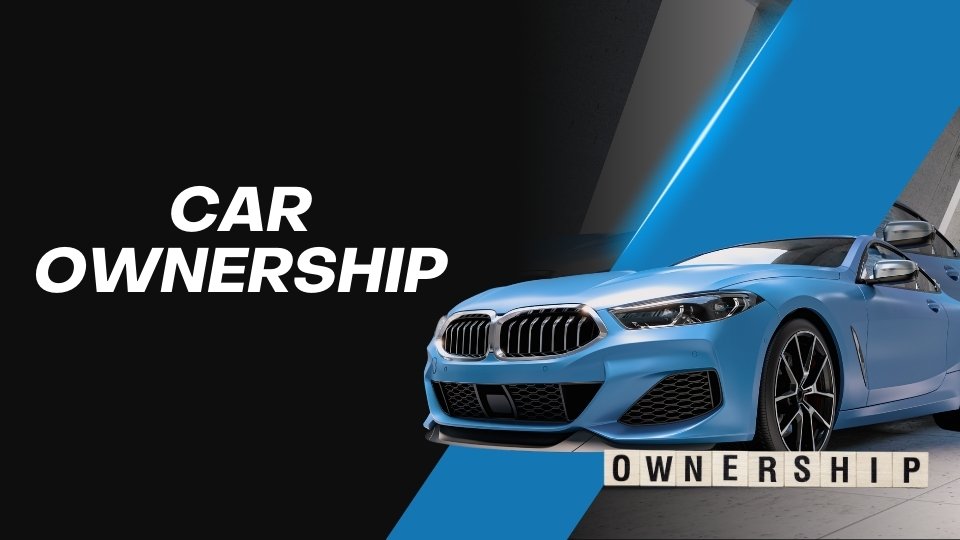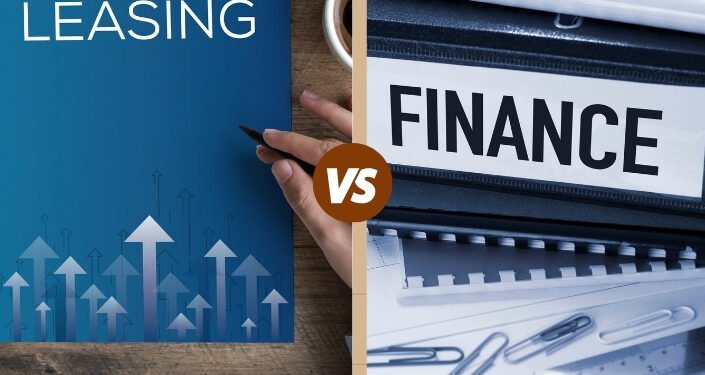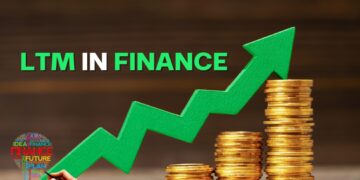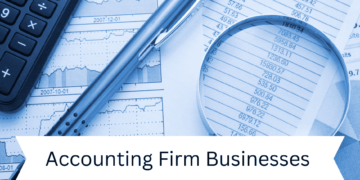When you purchase a car, a piece of equipment, or a piece of property, you typically have two primary paths: leasing and financing. Leasing is the act of renting an asset for a specific term period for monthly payments, but you do not own the asset. Investing, on the other hand, refers to paying cash up front for the asset, with no long-term obligation after full payment.
Selecting the right option is critical as it defines your financial position, long-term costs, and ownership advantages. An incorrect selection might result in sky-high costs or restricted options.
In this article, we explain the main differences between leasing and financing, their respective pros and cons, and some tips to help you determine which option is right for you. Whatever you need from a car to machinery or business equipment, knowing about these options will put you in a good position to make a sound financial decision.
What is Leasing?
Car leasing is the renting of a car for a predetermined amount of time and paying monthly rather than purchasing a car. It’s like renting a house; you get to use the car, but the leasing company owns it.

How Leasing Works
Leasing a car involves signing a contract with a dealership or leasing company. In this contract, you can drive the car for an agreed period, generally 2 to 4 years, in return for monthly payments. At the end of the lease term, you have the option of returning the car, renewing the lease, or, in some cases, purchasing the car by paying the remaining value.
Typical Lease Terms
How Long Is A Car Lease?
Most leases tend to last for 24 to 48 months.
Mileage limits
Leases have an annual mileage limit (typically 10,000 to 15,000 miles). Going over this limit means additional charges.
Upfront Costs & Fees
Many leases require a deposit, plus taxes and administrative fees. Early termination penalties also apply.
Monthly Payments in Leasing
Lease payments are generally less than loan payments because you’re only paying for the term-period depreciation rather than the entire vehicle value. But at the end of the lease, you will not own the car, unless you decide to buy it.
Leasing is an excellent option if you like to drive a new car every few years without having to worry about long-term maintenance expenses. But if ownership and driving flexibility matter, financing may be the better option.
Cons of Leasing
While leasing a car might seem like a desirable option, there are some downsides that you should consider before you make a decision. These are the main drawbacks of leasing:
No Ownership
Unlike when you buy a car, when you lease one, you aren’t building equity, because the vehicle is owned by the leasing company. Unlike financing, where your payments help you buy the car, leasing just grants the ability to drive the vehicle temporarily. At the end of your lease term, you have to return the car or pay more to buy it.
Mileage Restrictions and Additional Charges
Most lease contracts have a mileage cap, usually somewhere between 10,000 and 15,000 miles a year. Although your mileage is limited to this amount, if you use more, you will pay a nominal fee for each extra mile. That can increase the cost of leasing for people who drive a lot or go on long road trips.
Wear and Tear Lease-End Charges
The vehicle needs to be returned in good condition when the lease is up. And if you have scratches, dents, or interior damage exceeding what’s normal, prepare to pay costly penalties. These surprise costs can make leasing less economical over the long term.
Though leasing is known for its lower monthly payments and ability to get into the latest vehicles, some drivers may find these constraints to be a hindrance. Financing might offer a more attractive option if you value long-term savings and full ownership.
What is Financing?
For instance, vehicle financing is a form of car loan where the borrower buys a car and is expected to pay for the car over a set amount of time instead of paying the whole price right away. That means borrowing money from a bank, credit union, or dealership and paying it back over time, with interest. Instead of leasing, financing makes the car yours as soon as you have paid off the loan.

How Financing Works
Loan Process: The financing stage is when you apply for a loan from a lender. They review your credit score, income, and other financial particulars to ascertain your eligibility.
Down Payment: Most lenders expect a down payment, which is an initial payment you make to decrease the loan amount. A larger down payment reduces your monthly installments.
Interest Rates: This is the cost of borrowing money and Will vary based on the individual, the term of the loan, and current market conditions. A lower interest rate results in a lower overall cost.
Monthly Payments in Financing
In financing, you pay both the principal (the loan itself) and interest as part of your monthly payments. The loan term is usually between 36 and 72 months. Monthly payments are more than leasing, but you own the car outright at the end of the loan.
With long-term value, unlimited mileage, and no restrictions on modifications, car financing is a terrific choice for both business and personal purposes. It comes at a big monetary cost and with a need to pay you back.
Pros of Financing
Typically, buyers who are in it for the long haul with full ownership itself tend to be the ones who go for car financing. Financing, on the other hand, lets you keep the car once your loan payments are complete (but it also sets terms that may be relatively unyielding). First, the most notable benefits of financing are:
Full Car Ownership
Financing a car means making monthly payments to own it. As soon as you pay off your loan, the vehicle belongs to you with no further obligations. While with leasing, you have to return the car, with financing, you can keep the car for as long as you want.

No Mileage Limits
Unlike leasing, which typically gives you monthly mileage limits, financing has no mileage restrictions. Drive as much as you want without excess charges. This made financing a better deal for all your long-distance travelers and day-to-day commuters.
Can Modify or Sell the Car Anytime
With financing, you completely own and can control your vehicle. You can edit, customize, or improve it in any way you want. Also, you own the car and can sell it at any time, even before the loan is paid. If the car, however, is worth more than the amount still owed on the loan, you can even make a profit.
Car financing is designed for those who need a long-term investment, flexibility, as well as full control over their vehicle. Monthly payments are higher than leasing, but the benefit of full ownership makes it the best financial decision for many buyers.
Cons of Financing
Though financing allows buyers to own a vehicle long-term, it can also have its drawbacks that buyers should be aware of. Pros and Cons of Car Financing. Here are the biggest drawbacks of car financing:
Higher Monthly Payments Than Leasing
Monthly payments for car financing are generally higher than those for leasing. That’s because you’re paying for the car’s total value, plus interest, not just the depreciation. On a tighter budget, leasing may appear to be a cheaper, short-term option.
Car Depreciation (Loses Value Over Time)
The moment you drive a new car off the lot, it begins to depreciate. As it ages, its resale value drops, so you probably won’t get back the full amount you spent if you want to sell it later. This depreciation can work against you, especially if you plan to get a new car a few years down the road.
More Maintenance Costs After Warranty Expires
Most new cars will be sold with a manufacturer’s warranty covering repairs over a certain time (usually between 3 to 5 years). However, after the warranty ends, you must pay for all upkeep and repairs. In older cars, these costs could add up, making owning the car more costly in the long term.
If you want full control and ownership of your car, financing is a great option, but it requires an adept budget if you want to handle the high payments, vehicle depreciation, and long and costly maintenance.
Key Differences Between Leasing and Financing
When deciding between leasing and financing a car, it’s important to understand how they compare. While both options allow you to drive a vehicle, they have major differences in ownership, costs, and flexibility.

| Aspect | Leasing | Financing |
| Ownership | You don’t own the car; you must return it unless you buy it. | You own the car once the loan is fully paid. |
| Monthly Costs | Lower monthly payments (paying for depreciation). | Higher monthly payments (paying for the full car cost + interest). |
| End of Term | Return the car; option to buy in some cases. | Keep the car after paying off the loan. |
| Flexibility | Good for those who like new cars frequently, with less maintenance worries. | Ideal for long-term savings and full ownership control. |
Choosing between leasing and financing depends on your financial goals and driving habits. If you want lower monthly payments and frequently upgrade your car, leasing may be a better option. However, if you prefer ownership and long-term savings, financing is the smarter choice.
Which Option is Best for You?
Choosing between leasing and financing depends on your personal needs, budget, and driving habits. Both options have their pros and cons, so it’s important to consider what works best for your lifestyle.
Leasing: The Best Option for Drivers Who Get a New Car Often
If you enjoy getting a new car every few years and don’t love the hassle of long-term maintenance, leasing is a wonderful option for you. Lets you drive the latest models with lower monthly payments, and you get warranty coverage. The downside of leasing is that you have mileage limits and that you don’t own it at the end of the term.
Financing: Ideal for Someone Who Wants to Own Their Car Long Term
Financing is best if you want to own your car and have no long-term payments. Monthly payments are higher, but financing builds equity, and you keep the car as long as you want. Also, there are no mileage limits, and you can change or sell the vehicle when you want.
FAQs
- Is leasing better than financing?
Leasing is better if you want lower monthly payments and a new car every few years. Financing is better for long-term savings and ownership. - Can I switch from leasing to financing?
Yes, many lease agreements offer a lease-to-buy option, allowing you to purchase the car at the end of the lease. - What happens if I exceed my lease mileage limit?
You will be charged an extra fee per mile if you exceed the lease mileage limit, which can make leasing more expensive. - Does financing a car improve a credit score?
Yes, making on-time payments on a financed car can help improve your credit score, as it adds to your credit history. - Which option is more cost-effective in the long run?
Financing is more cost-effective in the long run since you own the car after completing the loan, whereas leasing requires ongoing payments.
Conclusion
Whether to lease or to finance depends on your financial goals, lifestyle, and driving habits. There are pros and cons to each of these choices.
Leasing is best for individuals who prefer lower monthly payments, few miles on the odometer, and a new car every few years. But there are mileage limitations, and you don’t own the car.
This is the best option for people wanting to save long-term, own their car outright, and drive as they please. Monthly payments may be higher, but at the end of the loan, you’ll own the vehicle.
As you make your decision, consider your budget, the driving you need to do, and your long-term plans. If you still aren’t sure, look into financing options, shop lease deals, or consult a car expert to help you determine what solution is best for you.
Read suggestion….Galadriel: The Timeless Elven Queen of Middle-earth










































